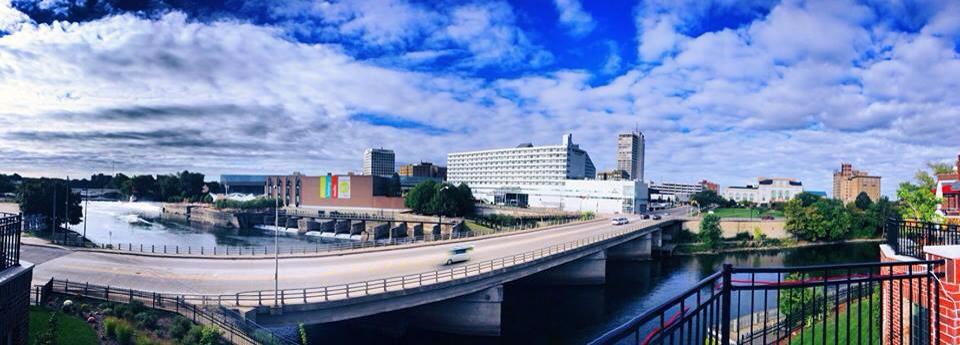
Moving to South Bend, Indiana: A Comprehensive Relocation Guide
Considering moving to South Bend, Indiana? This historic city blends Rust Belt resilience with university culture, affordable living, and ongoing downtown revitalization. Here’s your 2025 guide.
Demographic Profile to Consider If Moving to South Bend:
South Bend has a 2025 population of approximately 103,000 residents, making it Indiana’s fourth-largest city. Located along the famous “south bend” of the St. Joseph River in St. Joseph County, the city has transformed from its industrial manufacturing past into a diversified economy centered on education, healthcare, and technology. The median age is 34 years, creating a youthful energy driven largely by University of Notre Dame students and young professionals. The population is 54 percent White, 24 percent Black or African American, and includes growing Hispanic and Asian communities. Downtown revitalization efforts, including an $11 billion Amazon Web Services data center and substantial investment in the former South Bend Tribune building, signal renewed momentum in 2025. Find trusted local services for moving, living, and working in South Bend.South Bend Relocation Directory
Cost of Living to Consider If Moving to South Bend:
South Bend offers exceptional affordability compared to most U.S. metros. The median household income is approximately $53,000, while the median home value stands at just $125,000, providing accessible homeownership opportunities. The homeownership rate is 59 percent. Living costs remain significantly below national averages across housing, transportation, and daily expenses. However, the poverty rate of 23 percent reflects ongoing economic challenges in some neighborhoods. Property taxes follow St. Joseph County rates, which are moderate. For young professionals, families, and retirees seeking value, South Bend’s combination of low costs and urban amenities presents compelling opportunities.
Economy and Job Market:
South Bend’s economy employs over 46,000 people across diverse sectors. Manufacturing remains significant with 7,400 workers, though the economy has successfully diversified beyond its Studebaker heritage. Education employs 6,600 residents, dominated by the University of Notre Dame and Indiana University South Bend. Healthcare and social assistance provide 6,200 jobs, anchored by Beacon Health System, the region’s largest employer with over 7,000 employees. The university itself employs more than 6,000 people as the county’s second-largest employer. Other major employers include AM General (Humvee manufacturer), Tire Rack, Crowe accounting firm, and various technology companies. The ongoing tech hub development and AWS data center expansion promise substantial future job growth.
Education:
Education defines much of South Bend’s identity. South Bend Community School Corporation serves the city with numerous elementary, middle, and high schools. The adjacent University of Notre Dame brings national prestige, Division I athletics, world-class research, and cultural enrichment through the DeBartolo Performing Arts Center and Raclin Murphy Museum of Art. Indiana University South Bend offers accessible higher education with diverse degree programs. Ivy Tech Community College provides vocational and associate degree pathways. The concentration of higher education institutions creates a well-educated population, with 29 percent of residents holding bachelor’s degrees or higher, fostering innovation and attracting knowledge-based employers.
Recreation and Lifestyle:
South Bend combines small-city charm with big-city cultural amenities. Notre Dame football Saturdays bring unmatched energy and tradition to the region. The Morris Performing Arts Center in downtown South Bend hosts major touring acts and Broadway productions. The Link Trail, opened in 2025, connects campus to downtown, promoting walkability and community integration. The St. Joseph River offers kayaking and riverside trails. East Race Waterway provides unique urban whitewater recreation. Potawatomi Zoo and numerous parks offer family activities. Downtown continues evolving with restaurants, breweries, and entertainment venues. Chicago is 90 miles west, providing easy weekend access to world-class museums, dining, and professional sports.
Healthcare and Services:
Healthcare in South Bend is anchored by Beacon Health System, formed through the merger of Memorial Health System and Elkhart General Hospital. Beacon operates multiple facilities throughout St. Joseph County, providing comprehensive emergency care, surgical services, cancer treatment, and specialized medicine. Saint Joseph Health System offers additional hospital services. Numerous urgent care centers, specialty practices, and medical offices ensure accessible care throughout the region. The presence of Notre Dame and its research capabilities attracts high-quality medical professionals. For specialized treatments, Chicago’s renowned medical institutions are within 90 minutes.
Transportation:
South Bend features solid transportation infrastructure for a mid-sized city. Transpo provides public bus service throughout the city and county with multiple routes. The South Shore Line commuter rail connects the region to Chicago, though the nearest station is in nearby communities. South Bend International Airport offers direct flights to major hubs. Interstate 80/90 (Indiana Toll Road) runs along the northern edge of the county, providing east-west connectivity. U.S. Highway 31 runs north-south through the region. Amtrak service was discontinued decades ago, though regional discussions continue about restoring passenger rail. The Link Trail enhances bicycle and pedestrian connectivity between Notre Dame and downtown.
Conclusion:
Moving to South Bend in 2025 means joining a resilient city embracing its future through technology investment, downtown revitalization, and the enduring strength of Notre Dame, all while offering affordability and Midwest character increasingly rare in American metros.

